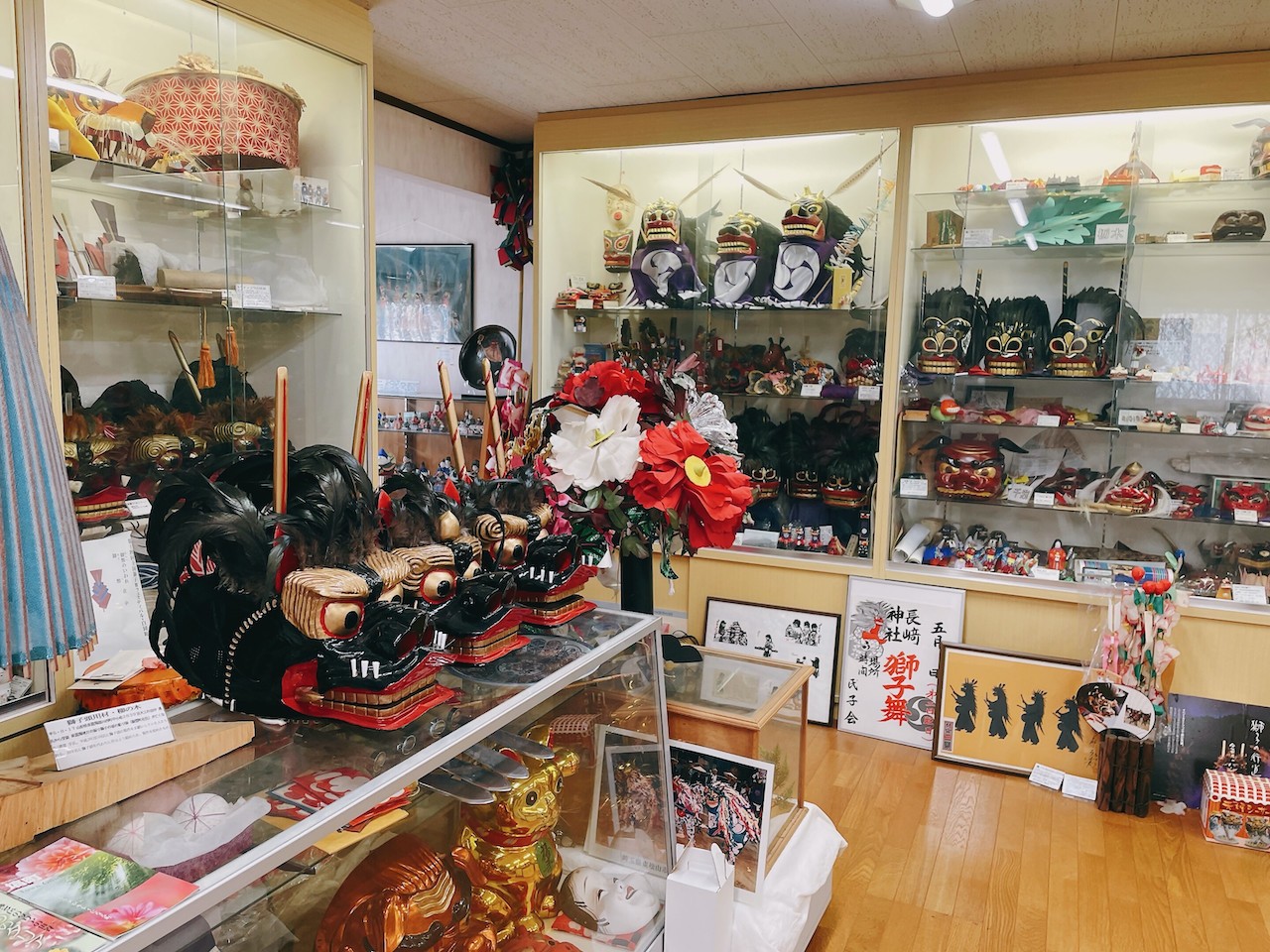Commentary by the Director

The Shishi Museum (Shishimai Museum) was established in 1993 by Yuichi Takahashi (b. 1949) as a private museum-like facility to showcase the diverse culture of lion dance in a tangible form.
(The preceding "Mini Shishi Exhibition Room" was inaugurated earlier in 1988.)
Inspired by the collection of Mr. Tanaka Kiyoshi (1915-91), a senior colleague of Mr. Takahashi at his workplace, Mr. Takahashi started collecting lion local toys in earnest in 1981.
The following year, he acquired lion dance equipment from Foshan, Guangdong Province, China, which sparked his interest in the lion dance itself.
The tradition of the lion dance originated in ancient Persia, where rulers often hunted lions to demonstrate their power to the people.
At that time, lions roamed across a vast area and were considered the kings of all animals.
They were deified and worshipped as the guardian god "shingha," depicted in reliefs on city walls, vessels, and thrones.
This cultural practice spread eastward, leading to the development of the Shishimai (lion dance) in ancient India and China, which eventually became popular throughout East Asia.
According to the "Nihon shoki" (The Chronicles of Japan, completed in 720 AD), the lion dance was introduced to Japan in the 20th year of Empress Suiko's reign (612 AD), when Mimaji of Baekje introduced "gigaku" (Asuka-period masked drama-dance performances) to the Asuka capital. Since then, the lion dance has been performed in Japan for over 1,400 years.
Subsequently, lion dances were incorporated into bugaku and dengaku traditions and spread across the country.
In Japan, in addition to the original form of the lion dance, there are variations such as "futari-tachi" (literally, "two people standing") that resemble the four legs of a lion, "tasu-tachi" (literally, "many people standing") that involves a large group of performers, and "hitori-tachi" (literally, "one person standing") performed in the Kanto and Tohoku regions.
These different styles of lion dance have spread to all prefectures in Japan and are deeply intertwined with the history and folklore of each region.
The "shishi" in the Kanto and Tohoku regions are not modeled after lions but are inspired by the spirits of deer, bears, boars, and serows native to Japan.
The lion dance typically involves a lion on a rampage followed by a person, and it is performed to purify the area associated with the lion. Although the forms may vary, the purpose and format of lion dances are consistent, and the "S" sound in the word "Shishimai" remains the same worldwide.
In an effort to showcase the charm of diverse lion dances, the museum collaborated with the "National Shishimai Festival" from 1998 to 2012, which traveled across Japan.
However, the festival unfortunately came to an end. Since 2015, the museum has been organizing its own annual "All Japan Shishimai Festival" at the Central Community Center in Shiraoka City, where the Shishi Museum is located.
Additionally, the National Shishimai Symposium has occasionally convened since 1999, and the museum has been hosting the Shishi Museum Awards Ceremony since 2007 to honor individuals or groups that have made significant contributions to the preservation and development of Shishimai culture.
Over the years, the museum has actively engaged in exchanges with lion dance-related groups and artisans from various regions, aiming to introduce lion dance culture to each area.
The museum has also garnered media coverage and presented lion dance culture in cities like Berlin (Germany), Boston (USA), Madrid (Spain), San Gemini (Italy), Prague (Czechia), Seoul (South Korea), Andong (South Korea), Hue (Vietnam), and others.
Our activities are documented and shared twice a year in the "Shishi Museum News," aimed at our members.
Yuichi Takahashi, Director, Shishi Museum





